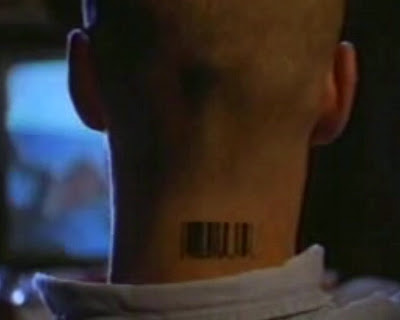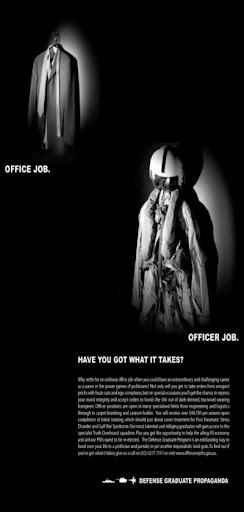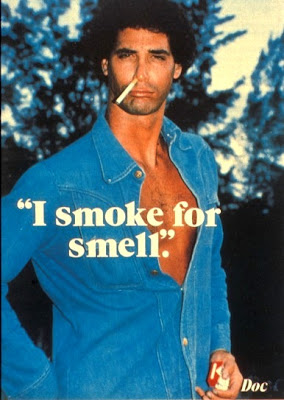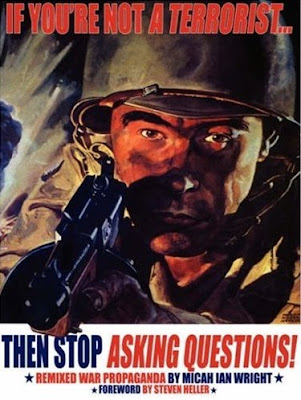
A plan to allow "domestic view" of data obtained from satellite and aircraft sensors that can "see through cloud cover and even penetrate buildings and underground bunkers" has been recently approved by the USA government. For the good and bad of it, Information age enhances the ability of states to control citizens and of business corporations to enlarge leverage our privacy into profit: better security means more information in corporate hands and less privacy. Furthermore, Information age allows business corporations and states to deliver their message more efficiently than ever before. This means more products, more advertisements and less free public space. Yet, Information age also allows activist groups and their counter messages to be heard by millions. Following is a fresh collection of popular and particularly interesting strategies, case studies and resources demonstrating the two-edged sword face of new media - where counteradvertising, commerce jamming and propaganda remixes make a stand.
1. The Blackspot Sneaker: Cutting Through the Hype of Mediated Reality
According to AdBusters Media Foundation, publishers of the most popular subvertising magazine in the world and a leading activist group based in Vancouver Canada, well made subvertisments need to efficiently "mimic the look and feel of the targeted ad, promoting the classic 'double-take' as viewers suddenly realize they have been duped". With a list successful media projects such as the TV Turnoff Week which was aired on CNN, the Buy Nothing Day videos of 2006 and 2007 and a series of viral TV subvertisments titled The Product Is You, AdBusters continue to demonstrate how TV commercial language can be altered and manipulated to "cut through the hype and glitz of our mediated reality" and reveal "a deeper truth within."
The Blackspot sneaker, designed by John Fluevog, is Adbusters' recent Commerce Jamming project, a first Anti-Brand and your chance to "unswoosh Nike's tired old swoosh and own one of the most Earth-friendly shoes in the world": 100% organic hemp upper, recycled tire sole, made by Vegetarian Shoes in a European union shop including a hand drawn (!) logo plus.
2. Busting Phillip Morris: Why are you buying your food from a tobacco company?
In fact, some culture jamming ads carry indisputable facts about their targets making some disturbing unfamiliar truths to be a little more familiar to the public. "Why are you buying your food from a tobacco company?" showcased a list of popular food products owned by Phillip Morris, the world's largest cigarette company: "...Chances are that you've been helping to promote Marlboro cigarettes without even knowing it. You can withdraw that support by personally boycotting these products" the ad said. "It's like giving money to a health organization that is working to find a cure for cancer - but in this case you are taking money from a corporation that causes it. So next time you go buy food- try it. You'll like it."
3. The Reality of War: Vertigo vs. Australia's Department of Defence
In March 2003 Australia's Department of Defence has withdrawn advertising from all student media across the continent in response to a controversial full-page parody of Defence recruitment advertising published on Vertigo, a student newspaper at the University of Technology, Sydney. The spoof ad satirically portrayed the Department of Defence as "a political tool of an Australian government intent on participating in an unsanctioned invasion of Iraq" and was followed up and reprinted by other student publications.
This act of solidarity was like a golden medal to the Vertigo activists who saw the fact "students are no longer being inundated with inaccurate representations of the Defence Force" as a great victory. Vertigo spokesperson, Jano Gibson argued that "the 'exciting', 'inspiring' and 'feel good' Army ads that appear in uni diaries, on billboards and television differs extremely from the reality of participating in a war" and that Vertigo's parody "simply corrects the omissions of the Department of Defence." Click any of the above pictures for a larger version or download the pdf here.
4. Volkswagen vs. a Sick Joke: The Suicide Bomber Polo Driver
Sometimes facts are not the issue neither is the spoofer's opinion and the busted ad is made either "for" a non-existent product, or with a real one simply as parody of advertisements. Rarely, a familiar brand language is mimicked so well that the entire world is successfully fooled. In January 2005, managers at German car manufacturer Volkswagen found themselves in the center of a global row after a meme hack sick video joke featuring a Palestinian suicide bomber in a Polo car was virally distributed across the world via the internet.
The spoof TV advert showed an "oriental" looking man stepping into a Polo car wearing a keffiyeh scarf, known as a symbol of Palestinian nationalism. After driving around the city for a while the driver stops near a resonant populated with lots of innocent civilians and detonates, yet leaving the car intact.
The video was punched-lined with the familiar style slogan announcing "Polo: small but tough". Check it out and see for yourself: Even though it is not very clear which "deeper truth" is actually being revealed here, this culture jammer was mimicking the familiar Volkswagen language so well it simply got people to believe it’s a real one.
5. Excuse me - Is that blood in your gas tank? Dave Ward vs. Hammer
"Please download the large version and pass it along to forums, websites and other people who might appreciate it. Spread the meme!" – Those were the words of Dave Ward, a professional photographer who in 2005 created two anti-Hummer spoof ad campaigns. Suggesting the real reason behind the ongoing blood shed in Iraq is to support America's oil demand fueled by manly Tofu hater ego-driven cars of the Hammer type, Ward's anti-war eco-friendly spoof ad became almost as popular as the originals and were massively and virally distributed on Internet.
In July 2006 the second Hummer ad titled "Excuse me - Is that blood in your gas tank?" showed up on Ads of the World, a commercial advertising archive for the best and most interesting creative work worldwide. I bet they didn't like this so much at Hammer's headquarters but in light of recent developments in America's approach to international global climate responsibility you might say this culture jamming attempt might have had some part in making a change.
6. The Madeleine Spoof: Extremely Hurtful and Not Funny
Not all ad spoofs are made with humanitarian causes in mind and some are made for profit or publicity and leave a very bad taste behind. An 'advertising' spoof published in a German satirical magazine named The Titanic included an allegedly double-spread ad for a supermarket, depicting a number of products promoted with the image and name of Madeleine McCann's. This poor-taste parody was later described by Madeleine's parent's spokesman as "extremely hurtful". Not much to say about this one. Perhaps just that it's a good example for a 'not very funny' spoof.
7. Doctors Ought to Care: I smoke for smell
Other spoofs can be very funny and can hardly defined as unjustified by anyone, that is unless you are a lung cancer tycoon. The idea to sabotage the interest of cigarette corporations using their own media weapons is far from being new and came up almost 30 years ago when the Doctors Ought to Care (DOC) organization was pioneered countered development and jamming tobacco ads. In a 1980 paper published in JAMA, DOC founder Alan Blum, MD, wrote that "humor can be an effective tool" in this war. Thus, in one of its poster series, the DOC parodies the classic I smoke for taste advertisement with a picture of a similarly defiant, macho character with a cigarette dangling from one nostril and the caption I smoke for smell.
8. Constitutions Matter: Billboard Liberation Campaign
A very popular form of adbusting, sometimes referred to as Billboard Modification or Billboard Liberation, takes the form of alternation of public space commercials and billboards to make a spoof or parody of the original corporate or political message. Usually it is the company that pays for the advertisement that is being under the attack. In some cases, however, the target can be the medium itself.
It was August 1, 2007, when the deadline for all billboards in the city of Tacoma, Washington to comply with a (ten years old) law requiring the removal of all (well defined) disruptive billboards. Three days later Pranks, a popular blog by Joey Skaggs dedicated to culture jamming and reality hacking published this follow up about hundreds of billboards in Tacoma which "have sprouted a scary blue and red message reading "Constitutions Matter". All adbusted billboards were left carrying the name "Clear Channel Outdoor", a company of Clear Channel Communications and one of the world's largest outdoor advertising corporations. Photos are taken by Pranks from a local city blog named exit133.com.
9. The Li Peng Story: Step Down to Appease the People’s Anger!
Politics, anti-war and freedom fighting were always of the most inviting countermessage battlefields for artists and writers. The story of the Li Peng poem is an extraordinary example of how mass media can be hacked to deliver political counter-messages even under extreme media control standards as practiced by Chinese government. In March of 1991 the overseas edition of the People’s Daily - China’s Communist Party newspaper - featured the following patriotic homesick poem, written by a graduate student from Los Angeles aliased Zhu Haihong. Apparently the poem was a brilliant "qianzi shi" also known as "inlaid-character" poem. Thus, when read diagonally from upper right to lower left the words "Li Peng must step down to appease the people’s anger!" could be interpreted. Li Peng, for those who don't know, was the Premier of China between 1987 and 1998 and the "chief architect" of the 1989 Tiananmen square massacre.
10. The Propaganda Remix Project: YOU Back The Attack! WE'LL Bomb Who We Want!
Lastly, and with no intentions of getting into any blue-red American politics, here is another great example for political counter messages targeting war propaganda: Micah Ian Wright is an American author who works in film and television and also the person behind YOU Back The Attack! WE'LL Bomb Who We Want!, a compilation of his Remixed War Propaganda with introductions by Howard Zinn and Kurt Vonnegut.
Other books from Wright include If You’re Not a Terrorist... Then Stop Asking Questions! and Surveillance Means Security! and hundreds of posters are available on his site The Propaganda Remix Project. When you are there, make sure you don't miss Wright's amazing collection of Hate Mail. All typos, errors, odd word choices, logic leaps, ad hominem attacks, homophobia, and delusions are claimed to be "quoted verbatim". I've found myself spending some time reading there. It's nice to see some folks know how to take some criticism :-)
read more | digg story



No comments:
Post a Comment